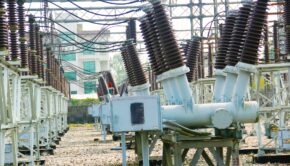Military & Aerospace Power Supplies: Understanding DC Converter and Transformer Technology
Understanding DC converter and electrical transformer terminology can help designers communicate their needs better to electronics providers.

If you’re in the market for military and aerospace power supplies, you may need to understand DC converters, select controls and transformer terminology. It’s important to know what you need and the correct terminology for requesting it to avoid confusion. Here are some of the basics:
What is a DC Converter?
A DC-to-DC converter is an electrical circuit, which will convert a source of direct current from one voltage level to another. DC converters are popular in aerospace applications and can also be found in cellular phones and laptop computers. Space saver converters are available and can increase voltage by taking it from a partially lowered battery voltage.
A DC-to-DC converter will regulate the output voltage with the exception of LED high-efficiency LED power sources. This is possible through simple charge pumps that can double or triple output voltages.
What is an Electrical Transformer?
An electrical transformer is used to change the voltage level from one stage to another. The construction of an electrical transformer is usually made of an iron or ferrite core. There are groups of copper conductors used to step-up or step-down a voltage level. Any transformer will behave in a respect to AC voltage.
What is a Step-Down Converter?
A step-down converter describes a device that has a lower output voltage than input voltages.
What is a Step-Up Converter?
A step-up converter is known for outputting a voltage higher than the input voltage.
What is Continuous Current Mode and Discontinuous Current Mode?
With continuous current mode, the inductive energy storage may never reach zero. With discontinuous current mode, the inductive energy storage may or may not cross zero.
What are Noise and RF Noise?
Most DC-to-DC converters are inaudible and should be discussed in reference to eliminating electrical and electromagnetic signal noise. Switching converters will result in the emission of radio waves when the switching frequency and its harmonics are reached. For instance, if you have a Cuk converter in continuous current mode, you’ll produce less harmonic noise than another switching converter. Most linear converters will produce little or no RF noise. RF noise is typically avoided because it causes electromagnetic interference (EMI).
What are Input and Output Noise?
Input noise refers to the noise that may be emitted from the power lines supplying the power, especially if the converter loads the input with sharp load edges. The output of a DC-to-DC converter is designed to produce an output that will vary constantly based upon the nominal designed output voltage. Keep in mind that all DC-to-DC converters will have some thermal output noise.
Knowing the Terminology is Half the Battle
If you know the terminology, it’s half the battle. This guide can help you understand the basics. More in depth knowledge can be obtained by performing research online or by asking an expert in the field.
For more information Click here
Author Bio:

Alanna Styrka an energetic and self motivated writer, she has written creative articles and journals for various channels. She has a keen interest in the advancement in Electrical and Electronics Services, and constantly keeps updating her blog on AC-DC Power Supply System.















